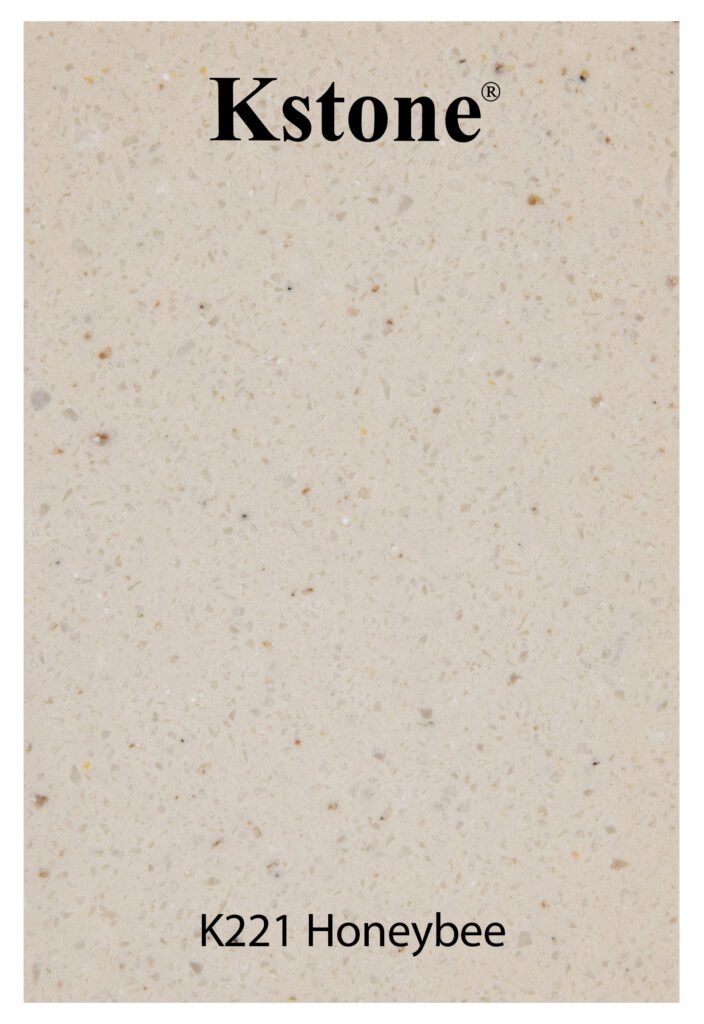Is Solid Surface Countertops Better Than Laminate?
What is a Solid Surface Countertop?
Solid surface countertops are made from acrylic-based materials that are non-porous and homogeneous. This ensures a consistent look and feel across the entire surface, making it more durable and easier to maintain. At Kstone, our 100% acrylic solid surface countertops are made from high-quality acrylic resins, natural minerals (such as aluminum trihydrate), and natural pigments. The unique manufacturing process involves chemically curing and heating the mixture to create a solid, customizable material that can be shaped into any size or design.
Pros of Solid Surface Countertops:
- Moisture-resistant: Solid surface countertops are non-porous, so moisture doesn’t seep into the material, preventing bacteria and mildew build-up.
- Stain-resistant: They resist stains better than laminate due to their non-porous surface.
- Seamless: The seamless appearance of solid surface countertops makes them an aesthetic choice, especially for kitchens and commercial spaces.
- Repairable: Unlike laminate, solid surface countertops can be repaired if damaged. Scratches or nicks can be sanded out easily.
- Customizable: Available in a variety of colors and designs that can mimic natural stones like granite and marble.
Cons of Solid Surface Countertops:
- Heat-sensitive: Solid surface countertops are not heat resistant and can discolor when exposed to direct heat or open flames.
- Chemical resistance: Some harsh chemicals may damage the surface, making it unsuitable for labs or environments with frequent chemical exposure.
- Scratching: While durable, the surface can scratch easily with sharp objects, although minor scratches can be buffed out.
What is a Laminate Countertop?
Laminate countertops are made by layering paper and resin over a base material, usually wood. These layers are compressed and bonded together, creating a durable, affordable surface. Laminate countertops are often seen as a cost-effective solution for residential kitchens and some commercial environments.
Pros of Laminate Countertops:
- Affordable: Laminate is one of the least expensive countertop materials available, making it a budget-friendly option.
- Variety of designs: Laminate comes in a wide range of colors, patterns, and textures, some of which mimic natural stone.
- Easy to replace: If you decide to change the look of your space, laminate countertops are easy to swap out without a significant cost.
Cons of Laminate Countertops:
- Not chemical or heat resistant: Laminate countertops can’t withstand high heat or exposure to harsh chemicals.
- Not as durable: Laminate is prone to scratches, dents, and chips, and it doesn’t offer the same long-term durability as solid surface materials.
- Not as customizable: Unlike solid surface, laminate doesn’t have the flexibility in design, especially when it comes to creating seamless installations.
Cost Comparison: Solid Surface vs. Laminate
When considering cost, laminate is a more budget-friendly option, priced around $10 to $30 per square foot. In comparison, solid surface countertops typically range from $50 to $200 per square foot. The price varies based on the finish, color, and manufacturer. While laminate is cheaper upfront, solid surface countertops offer better long-term value. The superior durability and easy maintenance of solid surface materials mean you’ll avoid frequent repairs and replacements, which can add to the overall cost of laminate in the long run.
Which is Better? Solid Surface Countertops or Laminate?
The choice between solid surface and laminate depends on the needs of your space:
- For Commercial Spaces: If you require a seamless, durable, and easy-to-maintain surface, solid surface countertops are the superior choice. They’re moisture-resistant, customizable, and can withstand regular use without compromising aesthetics.
- For Residential Use: If budget is a major concern, laminate may be a good option for light-use areas. However, if durability and long-term performance are more important, investing in solid surface material will save you money in the future.
- For Labs or High-Use Environments: Laminate may not be the best choice in environments that deal with harsh chemicals, as it can degrade over time. Opting for modified acrylic solid surfaces could be a better fit, as they offer increased chemical resistance and durability.
Conclusion
Whether you choose solid surface countertops or laminate, both materials have their own set of pros and cons. At Kstone, we believe 100% acrylic solid surface countertops offer unmatched durability, aesthetic appeal, and ease of maintenance. With 16 years of experience in manufacturing high-quality acrylic surfaces, we are proud to offer products that meet the highest standards of performance and design.
If you’re looking for a premium countertop material for your home or commercial space, explore Kstone’s 100% acrylic solid surface and modified acrylic solid surface options for the best in style, functionality, and long-lasting durability.




